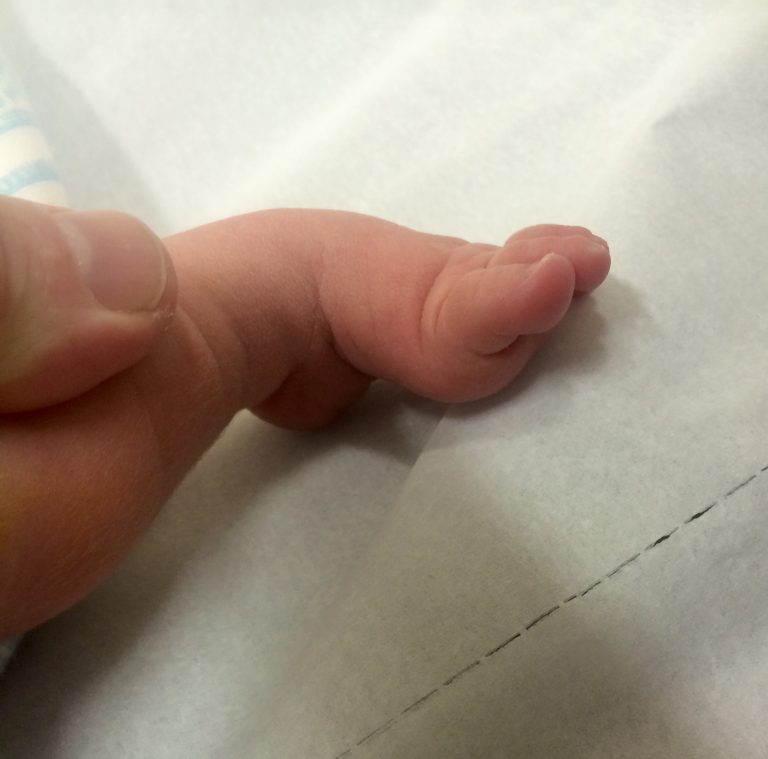What is it?
Clubfoot, also called Congenital Talipes Equinovarus (or CTEV) is a condition that is present at birth. It may be diagnosed on a routine antenatal ultrasound or soon after your baby is born. It involves a complex foot deformity which presents with the baby’s foot pointing down and in. This foot position can not be corrected with stretching.
The bones and soft tissues of your baby’s foot are affected and the foot may be shorter with a smaller calf muscle compared to the unaffected side. Clubfoot can occur in one or both feet and presents in both feet about 50% of the time. Club foot (CTEV) is different from a positional clubfoot. A positional clubfoot involves a foot position that is caused by the position of the baby’s foot in utero, it can be easily corrected with gentle stretches and usually resolves soon after birth.
What causes clubfoot?
In most cases (80%) the exact cause of clubfoot is not known, although it is thought to be a genetic cause. The remaining 20% of clubfoot presents in association with other condition such as spina bifida, cerebral palsy and arthrogryposis.
Who gets clubfoot?
Clubfoot occurs in about 1 in 1,000 babies. It occurs in boys more frequently than girls (2.5:1). The chance of having a second child born with clubfoot is 1 in 30.
What conditions are associated with clubfoot?
Clubfoot is associated with developmental dysplasia of the hip. A careful examination of the baby’s hips is required along with a screening hip ultrasound to check the development of your baby’s hips.
Will my baby be able to learn to walk?
Yes, with treatment your baby will walk with their foot flat to the ground. Most babies with club foot learn to walk at around the same time as a child without club foot.
What is the natural history of clubfoot?
If clubfoot is left untreated it can progress to a severe deformity that may cause lifelong disability. Without treatment the child will walk on the side or top of the foot. By the time the child is a young adult they will have a severe restriction of their walking, pain in the foot and be unable to wear normal footwear.
What is the treatment for clubfoot?
The gold standard for treating a clubfoot is the Ponseti Method which is divided into the corrective phase and maintenance phase. The corrective phase involves a series of plaster casts to the baby’s affected foot followed by a release of the Achilles tendon (See fact sheet “ Ponseti Treatment for Clubfoot” for more details). The maintenance phase involves using an orthotic device called “Boots and Bar” to hold the corrected position of the foot (See fact sheet “Boots and bar for Clubfoot” for more details).
As your child grows the affected foot has a tendency to grow to the original position (relapse). Boots and Bar are used to aim to prevent this from happening. Your baby will need to wear the boots and bar full time for the first 3 months (23 out of 24 hours a day) and then for nights and naps only until your child is 4 years of age.
What is the chance of relapse?
A relapse may occur as your child grows. Your child may have difficulty getting their heel to touch the ground when standing or walking and their foot may turn in as they walk. A relapse occurs in up to 30% of children with clubfoot.
Will my baby need any intervention as they grow?
A relapsed club foot can be treated using a burst of casting, or with a surgical intervention such as a tendon transfer. Close motoring of your child’s foot posture as they grow is extremely important.

